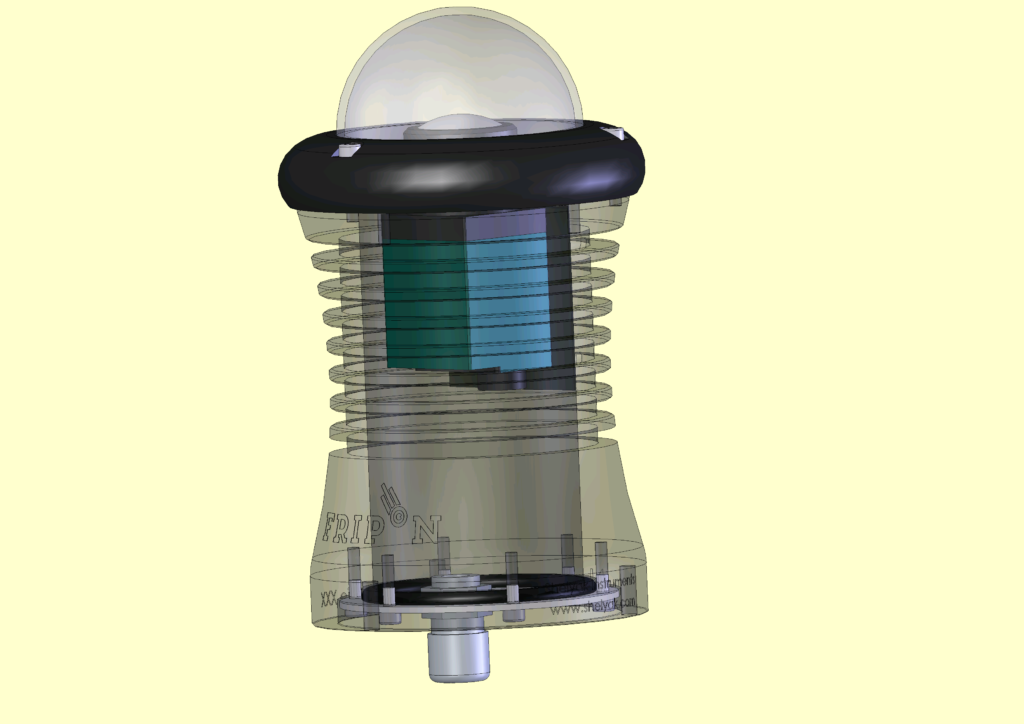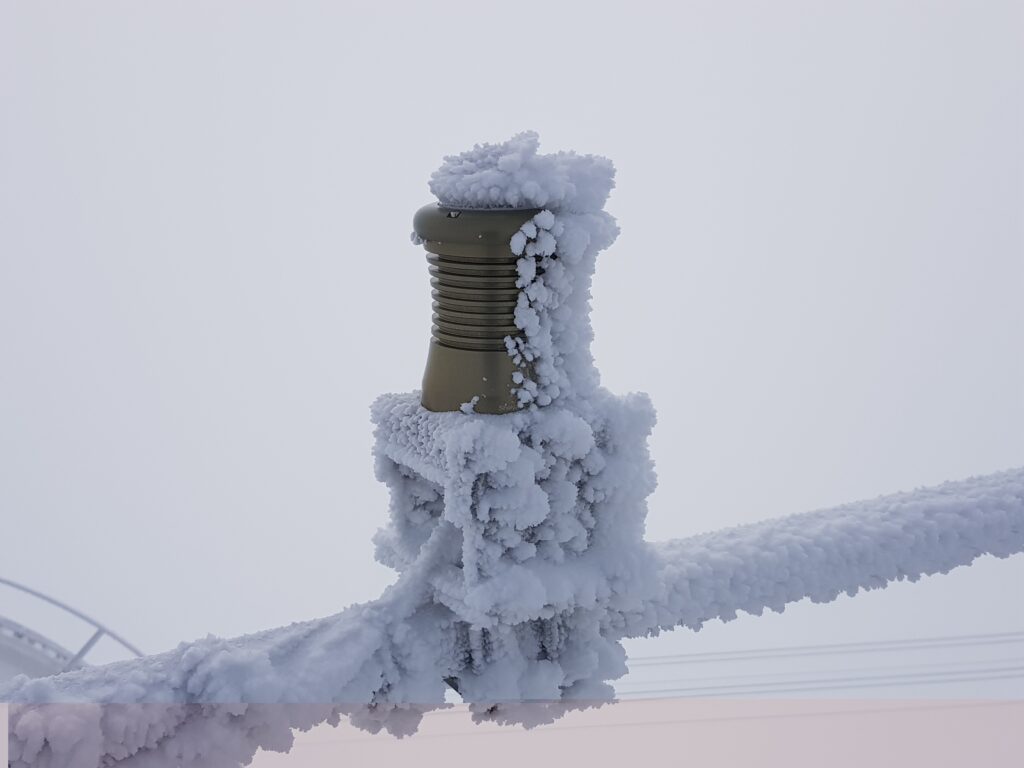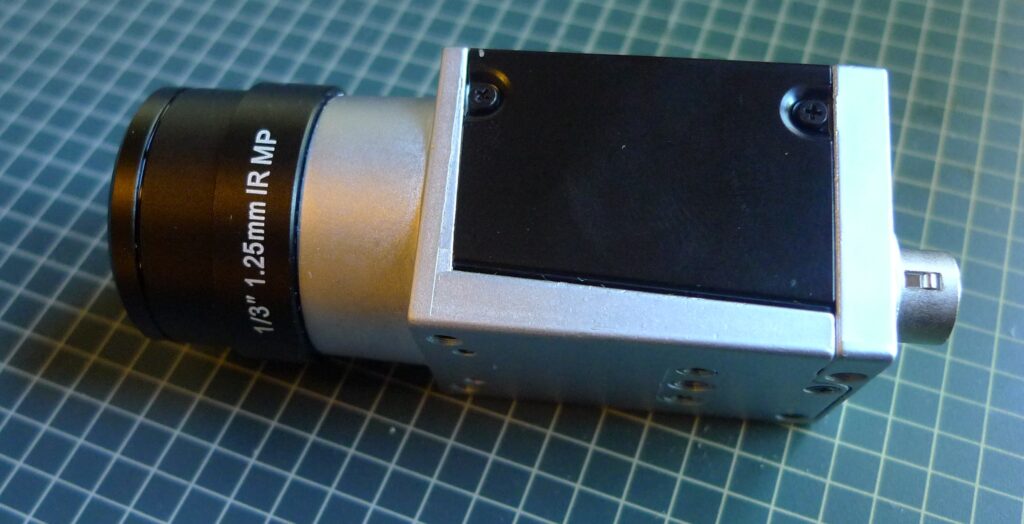We use a CCD Sony ICX445 chip with 1296 × 964 pixels and a pixel size of 3.75 × 3.75 μm. For the optical design, we use a 1.25 mm focal length F/2 fish-eye camera lens, which leads to a pixel scale of 10 arcmin. Given that fireballs are typically observed at an altitude between 100 and 40 km, we designed a network with a median distance of 80 km between cameras to perform an optimal triangulation. The astrometric accuracy is on the order of 1 arcmin, equivalent to 30 m at a distance of 100 km. The final accuracy on the trajectory is on the order of 20 m for the position and of 100 m/s for the velocity.
The optical device and the CCD were embedded into a special case (Fig. 2) sealed with a transparent dome, thereby allowing us to record full-sky images. Moreover, these cases are equipped with a passive radiator, which serves to release the heat produced by the electronics during the warm periods of the year to minimize CCD dark current.
Each camera is controlled by an Intel NUCi3 computer on which the data are temporarily stored. A single power over ethernet (PoE) cable is used for data transfer and for powering and remotely managing the camera through a TPLINK (TL-SG22110P or 1500G-10PS) switch. Such a solution makes it easy to install the optical station and operate it remotely and to use cables up to 100 meters long between the camera and the computer. Figure 2 shows the design of the camera as well as its installation at the Pic du Midi Observatory.



